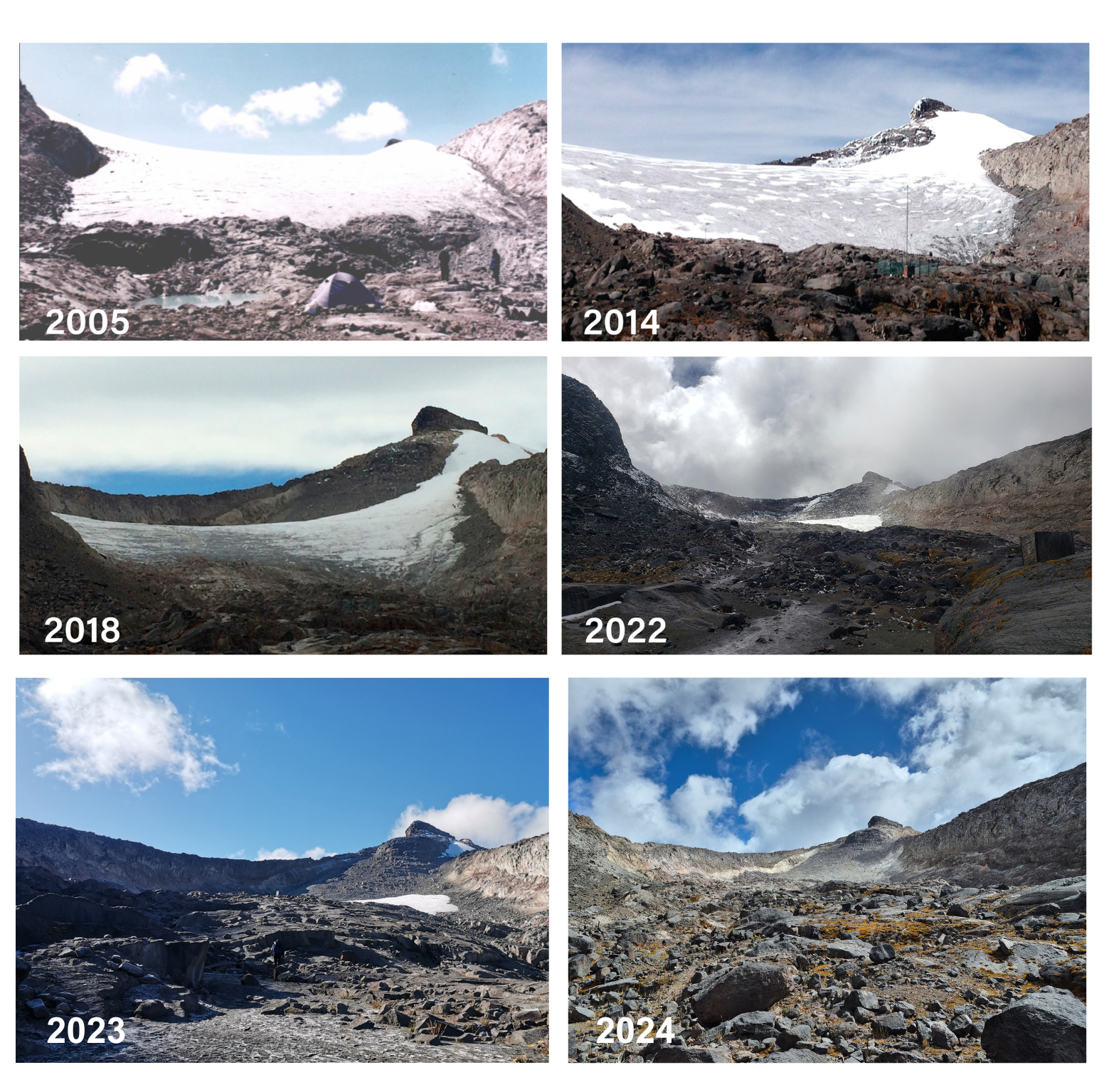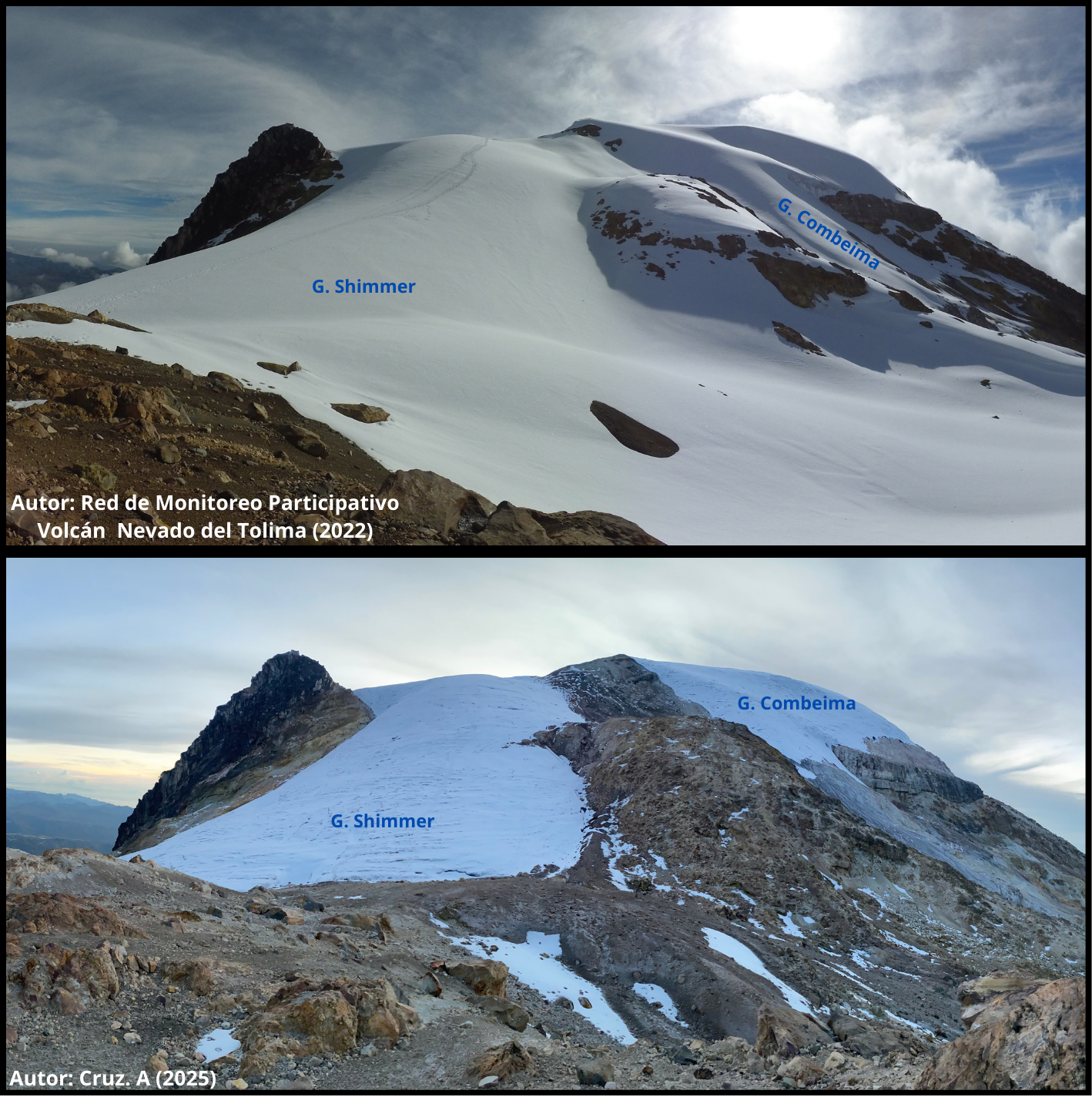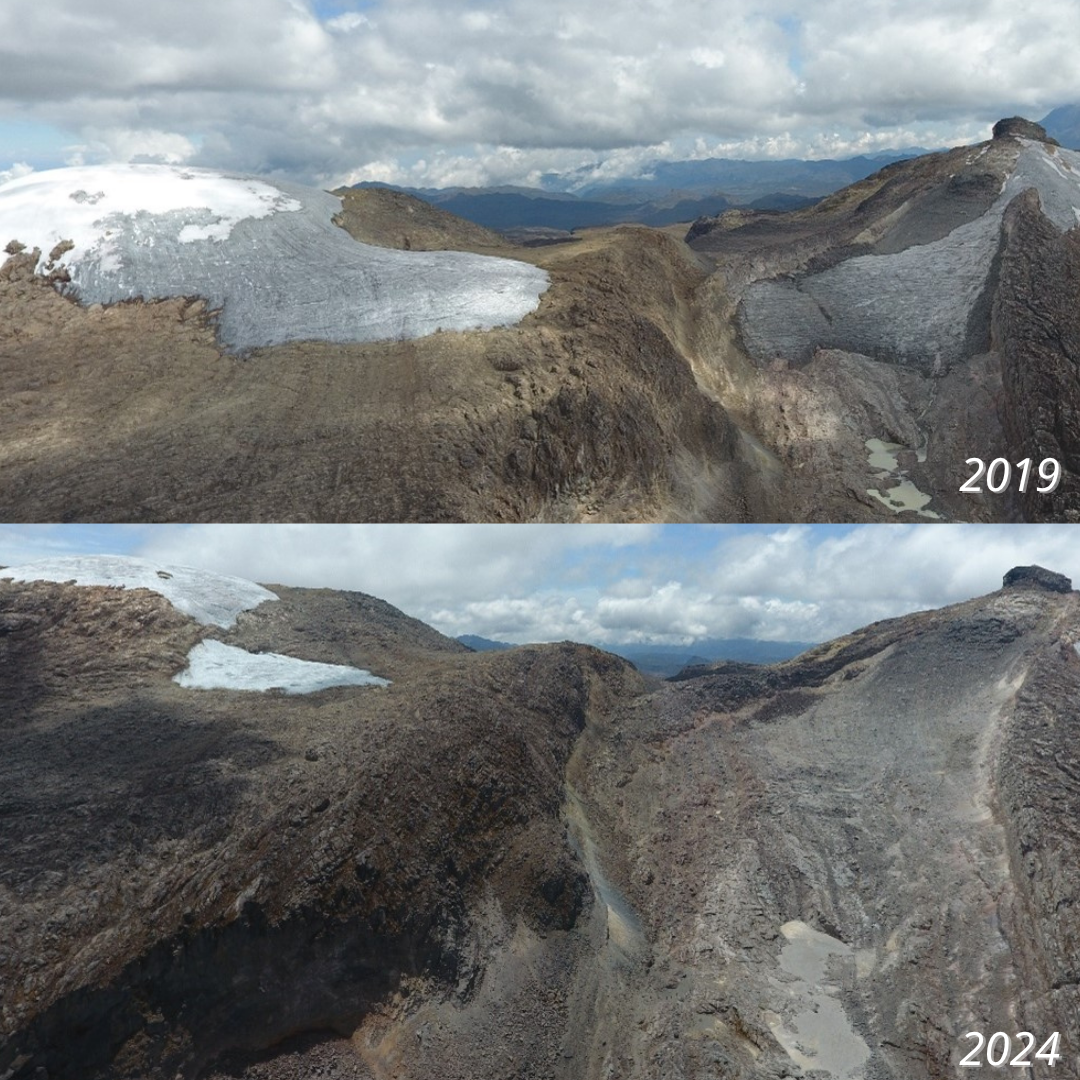Colombia has lost 6.8% of its glaciers in two years: Nevado Santa Isabel is on the verge of disappearing, warns IDEAM.

Colombia continues to lose its glaciers at an alarming rate. The Institute of Hydrology, Meteorology, and Environmental Studies (IDEAM) reported that between 2022 and 2024, the country will lose 6.8% of its glacial surface area, equivalent to a reduction of 2.26 km². Currently, Colombia retains only 30.83 km² of glacial ice, compared to the 33.09 km² it had just two years ago.
The most worrying case is that of Nevado Santa Isabel, located in the Los Nevados National Natural Park, in the high mountains of the Coffee Region.
This glacier, located between the departments of Caldas and Tolima, lost 45% of its surface area in just two years. One of its best-known remnants, the Conejeras Glacier—a key site for tourism and scientific research—disappeared in 2024, after 18 years of monthly monitoring by IDEAM.

Conejeras Glacier Comparison. Photo: JL Ceballos.
The accelerated retreat of Colombia's glaciers is primarily attributed to the 2023-2024 El Niño climate phenomenon. The high temperatures and low rainfall during this event rapidly melted the snow accumulated during the previous 2022-2023 La Niña. This combination caused unprecedented melting of several of the country's ice masses.
On the Ritacuba Blanco glacier, located north of the Sierra Nevada El Cocuy or Güicán, the thickness of ice and snow decreased by 7 meters during 2024. According to IDEAM, this El Niño phenomenon had a 22% greater impact on the glacier mass of that region than that recorded in the similar event of 2015-2016.
Glacial areas located below 5,000 meters above sea level were the most vulnerable, accounting for 75% of the total loss in Colombia. This trend is especially critical because it demonstrates that lower-altitude glaciers are unable to withstand the changing climatic conditions.

Changes in the surface area of the Shimmer and Combeima glaciers between 2022 and 2025. Photo: Courtesy of Ideam.
The IDEAM report details how each Colombian glacier has shrunk over the past two years:
- Nevado Santa Isabel: recorded the largest proportional loss, at 44.8%, falling from 0.29 km² in 2022 to 0.16 km² in 2024. Its extinction could occur in the next five years.
- Sierra Nevada de Santa Marta: lost 8.7% of its glacial area. Its glaciers are located above 5,000 meters, but they did not escape the melting.
- Nevado del Tolima: Its mass has shrunk by 8.2% and it is the second smallest in the country, at just 0.45 km².
- Sierra Nevada El Cocuy or Güicán: experienced a 7.4% loss. Some glaciers, such as Cerros de la Plaza, Güicán, and Pico Blanco, could disappear before 2026, as has already happened with Campanillas Blanco.
- Nevado del Ruiz: lost 6.6% of its glacial mass, and the Recio Glacier experienced the largest linear retreat in the country, at around 280 meters.
- Nevado del Huila: It lost the least, with a reduction of 2.6%.
Glacier retreat is nothing new in Colombia. Since the mid-19th century, the country has lost approximately 91% of its ice-covered surface. Scientists warn that if the trend of the past four decades continues, Colombia could become a country without glaciers in the coming decades.
The disappearance of these ecosystems not only represents an environmental loss. It also affects water and climate balance, and has cultural and social implications. Many of these glaciers have been historical, spiritual, and tourist landmarks for the surrounding communities.
According to IDEAM, glaciers are not only losing mass, but also land. This retreat has been documented with precise data at all of the country's snow-capped mountains.
For example, the Campanillas Blanco glacier, located in the Sierra Nevada El Cocuy or Güicán, completely disappeared in mid-2024. This case is emblematic of how the transformation of the glacial landscape advances silently, affecting not only the environment but also geographical memory.
Although the data is alarming, IDEAM emphasizes that this is also a key moment to raise environmental awareness. Glacier monitoring allows for a better understanding of climate change and its local consequences.

Comparisons of Nevado Santa Isabel in 2019 and 2024, taken with a drone. Photo: Courtesy of Ideam.
ANGELA MARÍA PÁEZ RODRÍGUEZ - SCHOOL OF MULTIMEDIA JOURNALISM EL TIEMPO.
eltiempo





